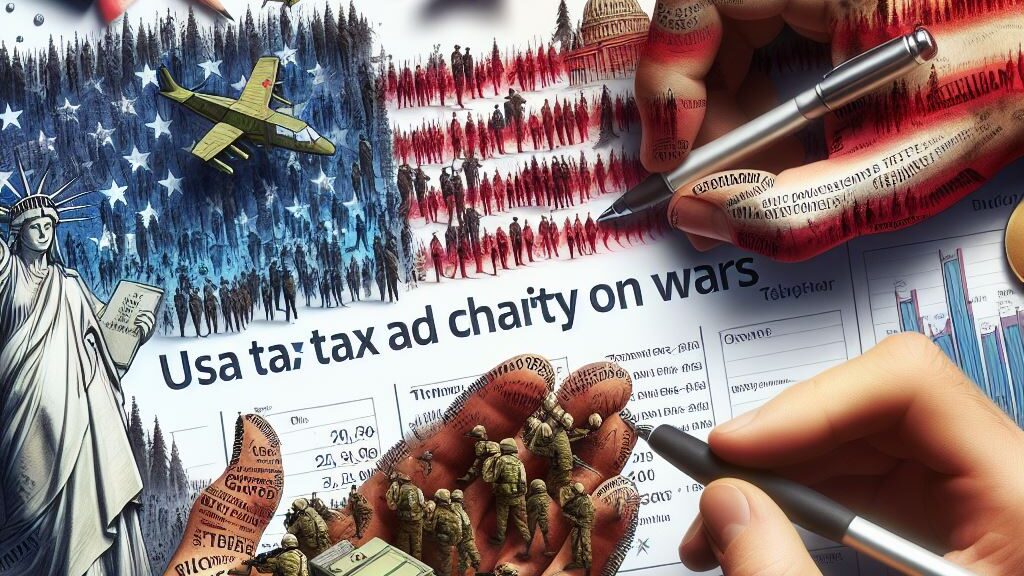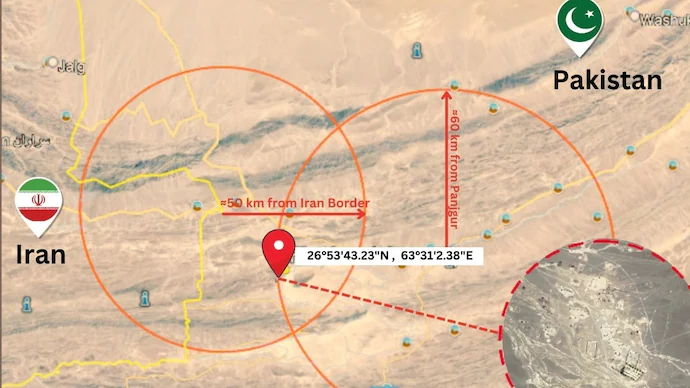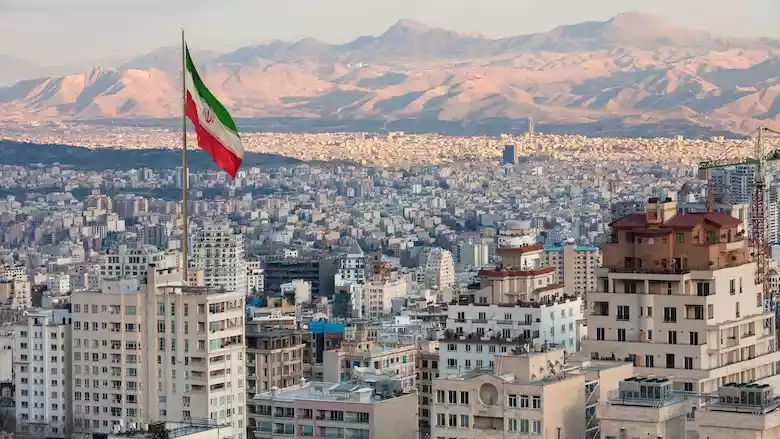How USA Tax & Charity is utilized by Govt.?
According to the latest report by Giving USA, Americans gave an estimated $484.85 billion to charity in 2021. This was a 4.0% increase from the previous year, but remained flat after adjusting for inflation. The average rich American (earning more than $200,000) gave about $30,600 to charity.
As for taxes, the average effective federal income tax rate for Americans was 14.6% in 2021. This means that the average American paid $14,600 in federal income taxes for every $100,000 of income. However, the tax rate varied significantly by income level, ranging from 1.5% for the lowest 20% of earners to 25.1% for the top 1% of earners.
War on the Name of Terror
The U.S. officially declared war on terror after the 9/11 attacks in 2001, and since then, it has conducted military operations and interventions in at least 85 countries, mostly in the Middle East, Africa and Asia. Some of the major countries where the U.S. has fought wars on terror are
Afghanistan, Iraq, Syria, Pakistan, Yemen, Somalia, Libya and Niger.
The U.S. has spent $8 trillion on the post-9/11 wars in Afghanistan, Pakistan, Iraq and elsewhere, which includes the estimated future costs of veterans’ care and interest payments on borrowing for these wars.
1. Cost of Afghanistan War
The US has spent an estimated $825 billion to $2.3 trillion on the war in Afghanistan since 2001. The exact amount depends on how the costs are calculated and what factors are included, such as interest payments, veterans’ care, reconstruction projects, and counterterrorism operations. The war has also resulted in nearly 900,000 deaths, including US military personnel, allied forces, civilians, and opposition fighters.
Some additional information that you might find interesting are:
- The US spent more than $100 billion a year on the war at its peak in 2011, when it had more than 100,000 troops in the country.
- The US has also spent about $130 billion on reconstruction projects in Afghanistan, but many of them have been plagued by corruption, waste, and inefficiency.
- The war in Afghanistan is part of a broader global war on terror, which has cost the US an estimated $8 trillion and involved military operations in over 80 countries.
- The war in Afghanistan has also had significant human and environmental impacts, such as displacing millions of people, destroying infrastructure, and degrading natural resources.
2. Cost of Iraq & Syria War
According to a report by Brown University, the US has spent nearly $2 trillion on the Iraq War since 2003. Costs of the 20-year war on terror: $8 trillion and 900,000 deaths. This includes not only the direct military spending, but also the costs of reconstruction, veterans’ care, and interest on debt.
According to the Costs of War project at Brown University, the U.S. has spent $2.1 trillion on military intervention in the Iraq/Syria war zone since 9/11. The U.S. also provides humanitarian assistance to the Syria response and has given nearly $15 billion since the start of the conflict. However, these figures may not reflect the full cost of the U.S. involvement in Syria, as some expenses are not separately reported by the U.S. government.
3. Cost of Pakistan War
According to one source, the U.S. has given $33.4 billion in economic and security assistance to Pakistan since 2002, as part of its global war on terror. However, this does not include the cost of the U.S. military operations in Pakistan, such as drone strikes and covert raids, which are not publicly reported by the U.S. government.
According to one source, more than 83,000 Pakistani soldiers and civilians lost their lives in the war on terror, the war in Pakistan has also caused significant displacement, with more than 3 million people internally displaced and over 2.5 million refugees in neighboring countries. The war has also contributed to political, economic, and social instability in Pakistan, as the government faces challenges from separatist and extremist movements, corruption and weak governance, poverty and underdevelopment, and regional and international pressures.
4. Cost of Yemen War
The U.S. has not officially declared war on Yemen, but it has supported the Saudi-led coalition that intervened in 2015 to restore the internationally recognized government and counter Iran’s influence. The U.S. has provided intelligence, logistics, weapons, and diplomatic cover to the coalition, as well as conducted drone strikes and covert operations against al-Qaeda and the Islamic State in Yemen. However, this source does not provide a breakdown of the spending by country or region.
5. Cost of Somalia War
The U.S. has been involved in the war in Somalia since 2007, when it launched airstrikes and covert operations against the Islamist militant group al-Shabaab, which is affiliated with al-Qaeda. The U.S. has also provided training, equipment, and funding to the Somali government and the African Union forces that support it. According to one source, the U.S. has spent at least $2.5 billion on counterterrorism operations in Somalia between 2007 and 2020. However, this source does not include the cost of humanitarian assistance, which amounted to $199 million in 2021 alone.
6. Cost of Libya War
The U.S. has been involved in the war in Libya since 2011, when it joined a NATO-led intervention to oust the longtime dictator Muammar Gaddafi. Since then, the U.S. has conducted airstrikes and covert operations to support the UN-backed government and counter the Islamic State and other militant groups in Libya. The U.S. military operations costs in Libya per month are between $60-$80 million, with total current costs around $1 billion. However, this source does not include the cost of humanitarian assistance, which amounted to $31 million in 2020.
7. Cost of Niger War
The U.S. has been involved in the war in Niger since 2013, when it signed a status of forces agreement to allow U.S. troops and aircraft to operate in Niger in a non-combat capacity to support French counterterrorism efforts. The U.S. has also built a drone base in Niger, which is used to conduct surveillance and strikes in the region.
Niger has lost more than 1,000 soldiers and civilians in the fight against Islamist militants since 2015. More than 300,000 people have been displaced by the violence in Niger, which has also worsened food insecurity and poverty.
Conclusion
War on terror has been a failure, a mistake, or a hoax, and that it has not made the world safer, but rather more dangerous and chaotic. It was used to gain political popularity among American people on the name of terror. It was used to:
- Weakens the Islamic States
- Loss of hundreds of thousands of lives
- Displacement of millions of people
- Violation of human rights and international law
- Increase of anti-American sentiment and radicalization
- Deterioration of civil liberties and democracy
- Waste of trillions of dollars
War on the name of terror is still continue in Palestine/Gaza,…
Share this content:



